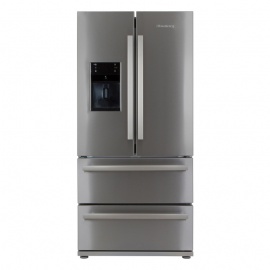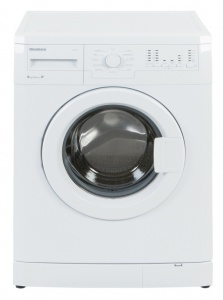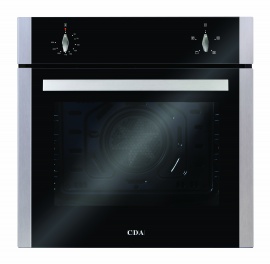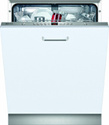Safely Transporting Your Appliances
Safely Transporting Your Appliances
General Tips
Most household appliances are used on a daily basis and can be potentially expensive to replace so if you find yourself moving home you'll likely want to take your old appliances with you instead of replacing them all. This can be a dangerous task if not carried out properly so over the course of this article I'll be going over some tips on moving appliances to make sure the process is carried out as smooth as possible with no damage to yourself or the appliances.
Before jumping in to more appliance specific tips there's a couple of general tips that can be applied to when your moving any appliance.
Use The Correct Moving Tools:
Appliances can be heavy, especially if your moving a fridge freezer or range cooker, so it's vital to make sure you use anything available to make the job easier. A transport dolly/cart is a piece of equipment that can be purchased fairly cheap and would not only make moving the appliances far easier, but also reduce the strain on your body.
Always Lift Correctly
You might not always have access to transportation aids when moving an appliance, so if you need to move it manually it's always best to follow the correct lifting procedures. Lifting correctly will reduce the strain on your body and reduce the potential for an injury to take place. A few key points to remember are:
- Lift with your knees - You've probably heard this advice a thousand times before, but that's because it's solid advice. If you bend over to lift the appliance you can put a strain on your back causing you permanent injury.
- Plan your route - Generally when moving an appliance you will have limited view of where you are going or even be moving backwards. Therefore it's always best to plan your route in advance to make sure there's no objects blocking your way you may trip up on and also so you can make sure the appliance will fit through any corridors, doorways or stairwells which you need to navigate through.
- Communicate - Chances are you won't be moving the appliances by yourself due to their size and weight so communication is key. It's easy for one person to lift too fast or move faster than their partner is comfortable with which can lead to damaging the appliance or more importantly, yourself.
- Don't be a hero - If your losing grip or the appliance is proving to be too heavy to move in one go, don't hesitate to put it down to take a rest and gather yourself. Moving it safely is more important than moving it fast.
Make sure everything is secure:
It's an obvious piece of advice but also one that's easy to overlook. The advice is to make sure all the appliances are secure before moving them. This can mean different things depending on the appliance. For instance it could be to make sure any removable shelves inside are removed or to make sure that the plug cable is tied up and secure against the appliance as to not trip on it.
Refrigeration
As an appliance that will be on 24/7 and used on a daily basis a fridge is one of the key components to a kitchen. They're not cheap to replace so if you have a working one it's very likely you'll want to take it with you when moving. Before you think about moving the appliance it would be wise to take a look at all the food you have and try to eat through as much of it as possible before the moving date, otherwise you risk wasting the food as your fridge will be without power for an extended period of time.

Unplug and Defrost:
The first thing you will want to do is empty your appliance out of any left over food, unplug the machine and defrost it the night before moving. If you don't do this it will start to defrost itself over the course of the move which could either cause water damage to other things in its vicinity or create wet and slippery surfaces which can cause potential danger when moving your appliances from one place to another.
Remove the Inside Shelves:
It may sound obvious, but it's easy to forget to remove any parts which can be removed, such as the shelves, egg tray, door shelves, salad box and freezer boxes. If your going to be transporting the appliance it is best to take all of these out and wrap them in bubble wrap to keep them safe and secure. By keeping them inside the unit it could cause them to move about inside during transport which may either damage the appliance or the parts themselves.
Secure The Doors:
Once the appliance is defrosted and all the shelves and trays have been removed from the inside you will need to secure the doors to stop them from swinging open mid transport. The best way to do this is to bubble wrap the machine which serves a dual purpose. Not only will it keep the doors shut but it will add a layer of protection to help during the transport phase. If you don't have access to bubble wrap you can secure the doors either by tying a rope or bungee cord around the doors or if this is also not available, they can be taped shut.
Keep Upright!
Once you've done the above and it's time to move the fridge, you'll want to be sure to keep it as upright as possible at all times. If you lay it down it can cause the liquids in the compressor to move about and potentially rest in the discharge line, this can cause damage to the machine even if you let it rest for plenty of time after the move. Sometimes it's unavoidable that you will need to lay it down and laying it down is not guaranteed to cause damage but it will definitely increase your odds of causing damage.
Let it Rest After a Hard Days Work:
Finally, once you've moved the fridge in to it's new home you'll want to let it rest in place for a while before turning on. This is to allow the gasses to settle in the compressor which greatly reduces the possibility of damages and allows your fridge to work at full capacity. Ideally you would want to leave it for 24 hours before plugging it back in, but we recommend a minimum of at least 4 hours.
Laundry Appliances
As long as you are cautious and careful, disconnecting a washing machine is a doable task which can be performed by yourself. When it then comes to moving the washing machine there is one main rule which you need to follow to keep it safe from damage.

Attach The Transit Bolts!
When you bought the machine it would have come with the transit bolts attached which are then removed before use. Hopefully you have kept them because they are vital to keeping the machine drum from being damaged in transit. When the transit bolts are attached to the machine it keeps the drum sturdy and in place, without these the drum will be free to shake all over the place with every turn and bump in the road which can cause massive damage to the machine.
You'll want to also make sure that there's no excess water in the machine before transporting it. You can check the manual for your washing machine which will tell you how you can drain a washing machine by hand. This will not only make it safer to transport but also lighter compared to if there was water in the machine.
Once it's disconnected, drained and had the transit bolts attached you are ready to transport the machine from one home to the next. To do this you will want to protect it if possible with a layer or 2 of bubble wrap which will help to absorb any small impact that comes from transporting it to your new home.
When transporting, you will want to keep the machine upright. Laying it down on its side or back isn't guaranteed to do any damage to the machine, but the odds of damage occurring do increase.
Just remember to take the bolts out once it's in your new home and ready to be used, because if you keep the bolts in during use, it can cause just as much damage as having them out during transit.
What If I've Lost My Transit Bolts?
If you don't have the transit bolts then you can still transport the machine, but you will need to make sure to be extra careful. As the drum will be loose inside the machine any excessive movement can cause it to rumble about inside and potentially damage the machine. Obviously you have no control over the quality of the road your travelling on, but it's best to avoid as many bumps as possible along the route too!
Does a Dryer Have Transit Bolts?
Generally tumble dryer's don't have transit bolts as the drum does not move in the same way as a washing machine does, but there are a rare few that do. If yours came with transit bolts attached then it would be best to transport it with those back in. Otherwise it is not something you will need to worry about as the drum will be safe and secure in transit.
How About a Washer Dryer?
Similar to a washing machine, a washer dryer will have transit bolts in it. This is because the drum serves a dual purpose of washing and drying so it needs to have the same motion available as a drum in a normal washing machine would.
Ovens
Gas
The first thing you need to think about when you plan to move a cooker of any type is weather you feel confident disconnecting the appliance. If the fuel type is gas then you will need the help of a gas safe registered engineer to disconnect and also reconnect it at the other end. Unless you have a gas safe certificate then carrying out any work on a gas appliance can be dangerous, and potentially deadly so it is vital to hire a professional to do the job.

Electric
Unless you have experience with electronics, then we would again advise to get a professional in to do the disconnection and re connection. Doing it yourself can be potentially lethal if you don't know what you're doing.
Post Disconnection
Once the cooker is disconnected you will need to remove any loose components. This includes the shelves inside the oven and if it has a gas hob top, then the pan stands and gas burner caps will also need to be removed and safely stored for transport.
When it's ready to move do not lift it by the handles on the door. Lifting the appliance this way has the potential to break the handle off the door, or even pull the whole door off as the majority of the weight of the oven will be being help up by the handle.
Hobs
Similar to the cookers, if it's a gas hob you will need to get in touch with a gas safe registered. Some electric hobs are connected via a normal 3 pin plug socket, so you would be able to cut off the electricity to the socket and unplug it as you would a normal plug. If it is hard wired in then you will need to contact an electrician unless you are confident doing the disconnection yourself.
Once disconnected you can remove any pan stands or gas burners (if it's a gas hob) and wrap them up securely with bubble wrap. Once removed you need to protect the hob itself in bubble wrap to keep it safe during transport. A hob can be quite fragile and if not handled carefully can easily lead to damages that would cost just as much to repair as it would be to outright buy a new one.
So apart from the disconnection and reconnection issue the transportation of a hob is fairly straight forward. Keep it protected and don't expose it to unnecessary bumps and knocks and it should arrive in your new home in one piece.





















